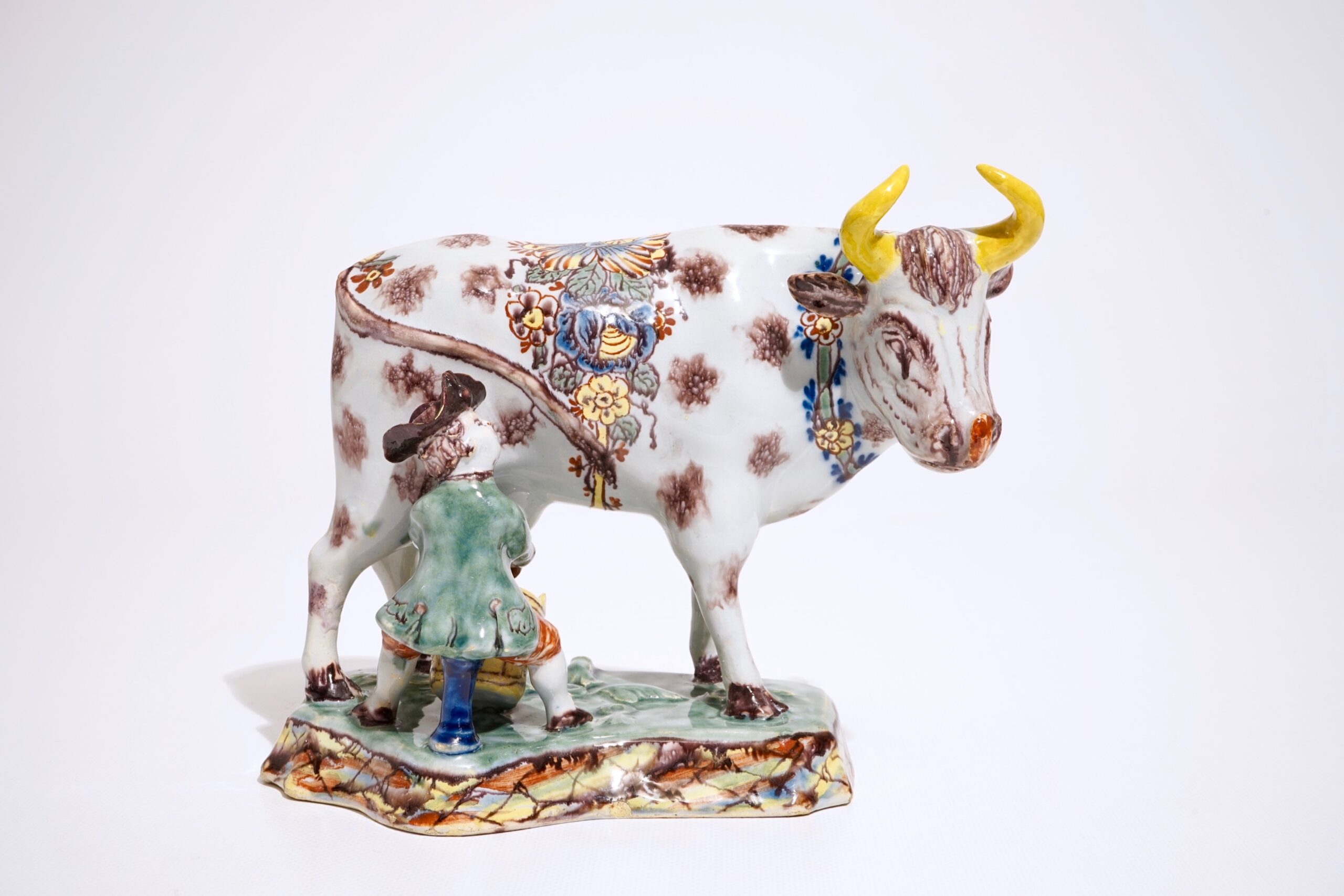
A Recalibration of Attributions
Attributing marks to the Witte Ster (the White Star) factory and in particular to specific persons, has been difficult over the years due to limited archival material. Henry Havard, a French art critic and researcher made the first attempt to attribute marks when he produced a catalogue for the Delftware collection of the famous Dutch collector J.F. Loudon in 1877. Later, more extensive archival research of Delft’s pottery factories was conducted by Projectgroep Delfts Aardewerk’ (Project Group Delftware). The group arranged the new information in a more systematical way and this resulted in an overview with new attributions and suggestions (1). However, the only certain attribution for the Witte Ster factory is the mark of Albertus Kiel, owner from 1761 until 1772. Kiel deposited his A:K mark to the city council of Delft in 1764. In the publication by Projectgroep Delfts Aardewerk, head of research Mrs. Wik Hoekstra indicates that more research is necessary (2). Now, new insights give reason for a recalibration of some of the marks attributed to different owners or foremen of De Witte Ster.
The ‘star (I)DB’ mark that regularly appears on objects is one mark that we believe deserves renewed research. Mrs. Hoekstra attributed the mark to Jan van der Burgh (interpreting the initials as JVDB), who was registered as foreman of De Witte Ster since 1705 (3). In the same publication however, this mark is also attributed to Jacoba de Bergh, co-owner since 1742 until 1761 (4). For unknown reasons, nowadays it is assumed to be the mark of Dirck van den Berg, owner of De Witte Ster from 1776 until 1793 (5).
We uncovered a discrepancy in the previous attributions during our research for the article ‘Delft and Disaster,’ which discusses a commemorative plate for the earthquake of 1692. Coincidently, we discovered two similar ‘earthquake plates’ that commemorate a later earthquake in 1756. Both of these plates are marked with ‘star DB’. If these plates were actually made during the ownership of Dirck van den Berg, they would have been produced much later than the earthquake in 1756. In our article, we explain that commemorative objects were often made much later than the event itself. However, this seems unlikely in this case if we compare stylistic features of these plates. That makes the attribution to Dirck van den Berg questionable.
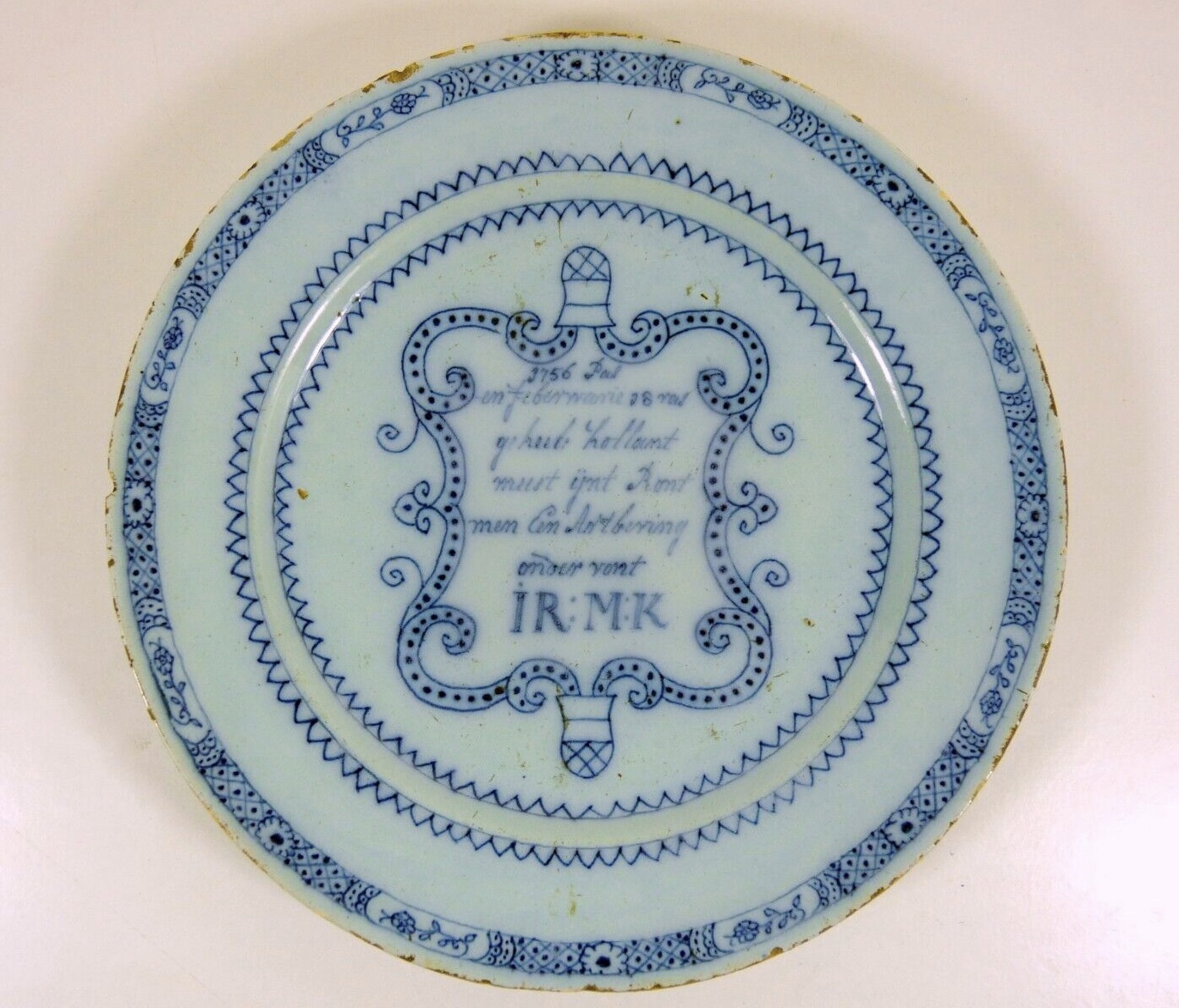
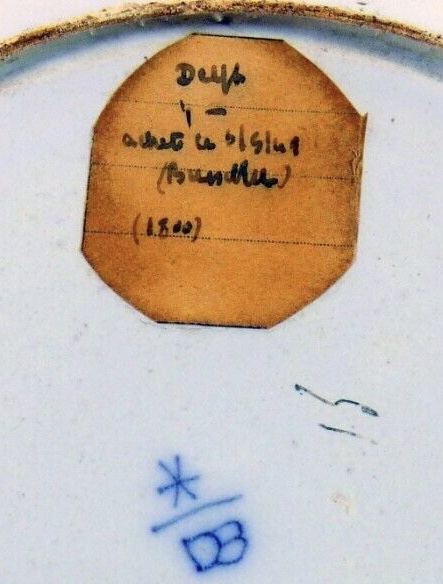
Earthquake plate from a private collection
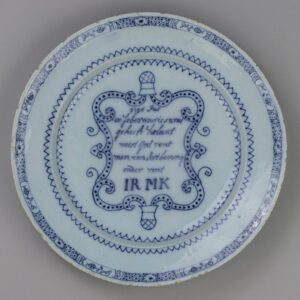
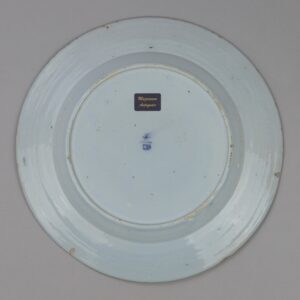
Earthquake plate from the collection of Mazereeuw Antiquair
There are in fact two (or three if we count the ‘JVDB’ interpretation of Hoekstra) of the ‘star (I)DB’ marks: one with a dot on the ‘D’, that could be seen as ‘star IDB’ and one without, ‘star DB’. A systematic comparison based on style, period and in a few cases also a date, show that it is very likely that the Star (I)DB mark was used simultaneously during the same ownership. The variation in marks could also refer to different persons involved with De Witte Ster in this period. In our opinion, the attribution of the ‘star (I)DB’ mark to Dirk van den Berg is incorrect. The examples below support this theory.
The objects below, all marked with ‘star (I)DB’ show features that share stylistic similarities with earlier objects made during the ownership of Johanna, Jacoba and Maria, between 1743 and 1761, rather than during that of Dirck van den Berg (1776-1793).
A pair of polychrome cows in the collection of the Kunstmuseum, Den Haag (Art Museum, The Hague) for example, bear the same ‘star DB’ mark. This model of cow figures with flat grounds, are known since the first quarter of the eighteenth century and this pair is more likely earlier than now assumed (6).
Pair of polychrome cows, Kunstmuseum Den Haag, object number 1025975
A butter tureen from the Museum of Fine Arts in Boston is stylistically comparable with the 1756 earthquake plates and the herring dish below. They also bear the same ‘star (I)DB’ mark. Based on the style of the decoration, these objects were probably made in the middle of the eighteenth century, during the ownership of the De Bergh sisters, rather than during the period when Dirck van der Berg owned the company.
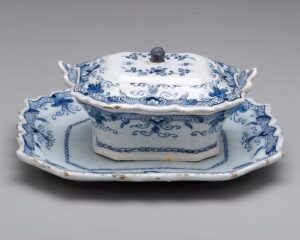
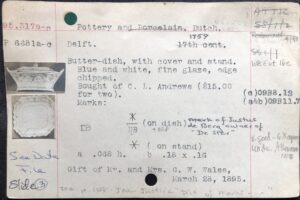
Butter Tureen, MFA Boston, inv. nr 95.317-c
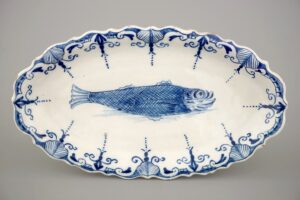
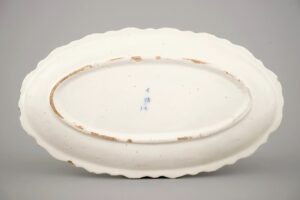
Herring dish, private collection
This attribution is supported by two identical plates depicting the Mats Man mill in Koog aan de Zaan, dated 1747. Both plates were previously part of the Aronson Antiquairs collection. The owner of the Mats Man, Claas Mats, received a so called ‘windbrief’ (windletter), permission to build the mill, together with a description of the conditions he had to adhere to, in 1747. This must have been the reason for the production of this plates. In that period De Witte Ster was owned by the sisters, Johanna, Jacoba and Maria de Bergh. ‘Star (I)DB’ is, as already suggested by Hoekstra, very likely referring to them: I for Jacoba or Johanna and ‘DB’ for De Bergh. Interestingly, one plate is marked with a dot above the ‘D’, so ‘star IDB’ while the other lacks this dot. The fact that the plates are identical and dated make it likely that they were produced at the same time, during the same directorship.
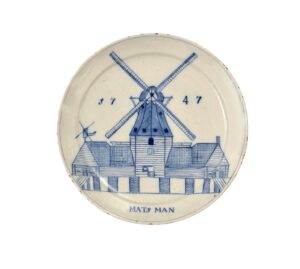
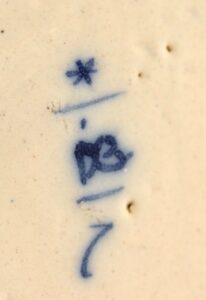
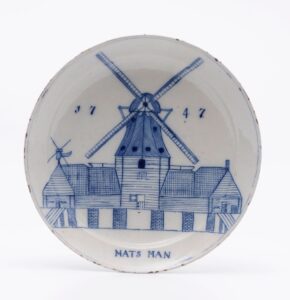
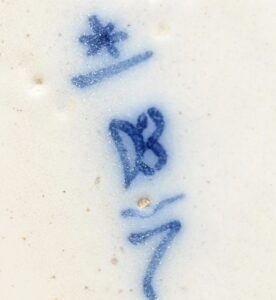
Two ‘Mats Man’ plates, formerly Aronson collection inventory number ref. D1256 and D1454
The same applies to this pike tureen, marked ‘Star DB’ without the dot. These types of tureens were made since the middle of the eighteenth century. Based on the design and lack of Rococo features, this particular tureen was probably an early example. Therefore, it fits perfectly within the period that the De Bergh sisters owned the Witte Ster.
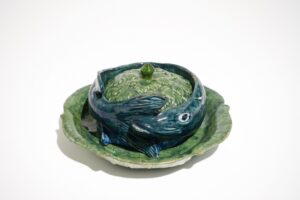
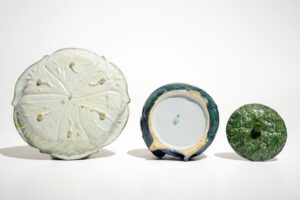
Pike Tureen, private collection
The variant ‘Star DVDB’ is mentioned by Hoekstra and attributed to Dirck van den Berg (7). This attribution is shared in several publications about Delftware (8). This conclusion is also supported by multiple stylistic examples.
Pair of bowl, Kunstmuseum Den Haag, object number 0400242
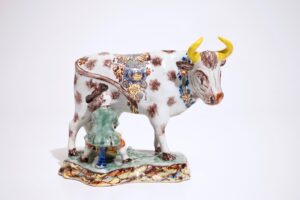
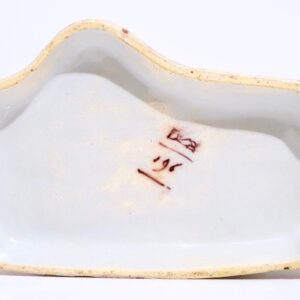
Polychrome cow group, private collection
Due to unknown reasons, the ‘star (I)DB’ mark has been wrongly attributed to Dirck van den Berg in many cases. Based on style, the marked objects were likely made during the ownership of the De Bergh sisters in the middle of the eighteenth century. Objects made while Dirck van den Berg owned the Witte Ster between 1776 and 1793 are marked with his full initials: ‘star DVDB’.
Notes:
1. Wik Hoekstra-Klein, Geschiedenis van Delftse plateelbakkerijen, Deel 14, De Witte Starre, 2007, p. 48
2. Hoekstra, p. 48
3. Hoekstra, p. 52
4. Hoekstra, p. 58
5. Marion S. van Aken -Fehmers and Loet Schleldorn, Delfts Aardewerk. Geschiedenis van een Nationaal Product. Deel II, Waanders Uitgevers, Zwolle 2001, p. 246
6. https://www.aronson.com/object/d2049-pair-of-blue-and-white-cows/
7. Hoekstra, p. 49
8. Christine Lahaussois, ‘Delfts Aardewerk’,Amsterdam University Press / Mercatorfonds, 2008, p. 221 and van Aken -Fehmers ibid., p. 246



